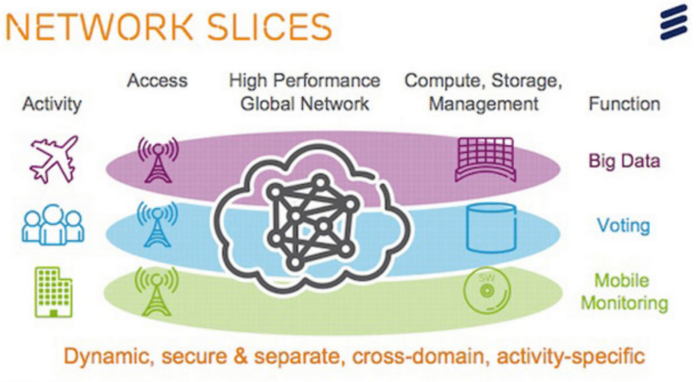Industry leaders share their perspectives on network slicing
Using software-defined networking to run multiple, virtual networks on a single, physical infrastructure–that’s the dream of 5G. As new services are created, servers will hop into action to create a customized, on-demand data pipe that will connect any device in a way that makes optimal use of network and spectrum resources. This concept is called network slicing, and it will be a major value creator for 5G. Let’s take stock of the development around network slicing in conversation with industry experts.
Oracle VP of Product Management John Lenns said during Mobile World Congress 2018 that as operators deploy NSA 5G NR networks, Lenns said, “Their intent is to connect up the 5G radio with the 4G core. Oracle is already in the 4G core with our diameter signaling router, with our policy solution. Enhancements to those products will enable operators to take that first step and leverage the 5G radio.”
Speaking to the move from interworking 5G radio with a totally new 5G core, Lenns said, “It’s going to be a little while.” He said the request for information (RFI) process is starting, which will give way to lab work.
With support for network slicing and microservices architecture, “I think the efficiencies…might come from how products will be deployed in the IoT and 5G space where the operators are now asking for microservice-based deployments.” Instead of “monolithic,” vertical software stacks, Lenns said, “The architecture demands are going to be such that these solutions be deployed in a container-based, microservices architecture. Only those microservices that are needed for that particular offering at that particular time will need to be turned up. It will be a new way to deploy very rapidly and turn it up, turn it down for the service, and be very efficient.”
Mavenir recently announced a virtualized network slicing software solution dubbed CloudRange Network Slice Suite. The idea is virtual provisioning of a network within a network based on “criteria that are required for practical deployments such as subscriber data/intelligence in the network, MVNO network setup, and network upgrade with virtualized multi-vendor deployments.”
Mavenir President and CEO Pardeep Kohli said operators don’t have to wait for 5G to use network slicing to “reduce costs of existing traffic. We have built a slicing orchestrator function that works across the radio, the core and applications. Until now, it’s just been applications and core running through NFV but we are implementing a similar approach with Mavenir’s Cloud RAN which includes radio slicing. We are essentially redefining the mobile network economics today and providing a runway for migration to 5G.”
ZTE also recently released what it claims to be the world’s first end-to-end 5G network slicing solution. ZTE highlighted solution is the key to the 5G network as it allows the resource of a physical network to be flexibly allocated into multiple virtualized network slices in order to adapt to the needs of different industrial services, such as industrial control, automatic driving, intelligent power grid and remote medical treatment.
ZTE’s solution is an end-to-end, all cloud-based network slicing solution across 5G radio access network, core network and bearer network. The solution is based on a micro-service architecture and realizes the convergence of the unified air interface, the virtualized core network and the SDN-based bearer network.
“The release of the 5G E2E network slicing solution is a key milestone towards the 5G commercialization. It not only provides an industrial leading implementation method of network slice, but also turns the network slice into an operational and valuable product for the vertical industry, inaugurating a new mode of the 5G network slice operation,” said You Yan, vice president at ZTE.
Ari Banerjee, Netcracker’s vice president of strategy, said 5G is about the network and the revenue-generating services it can create. Noting engagements with Japanese customers, Banerjee said there is ongoing work with friendly customers to investigate “how they can provide a dedicated network slice for the specific service. As you go further in the next two to three years, it will absolutely become much more critical. What’s going to end up happening is enterprise coming to the operator asking for specific [service-level agreements], which is this kind of latency, this kind of priority handling, this level of [quality of service], this level of caching, these kind of applications I want to run. The point is for operators to provide them with the right slices and connect them to those slices. We will see more and more of that as we move into the next few years.”

